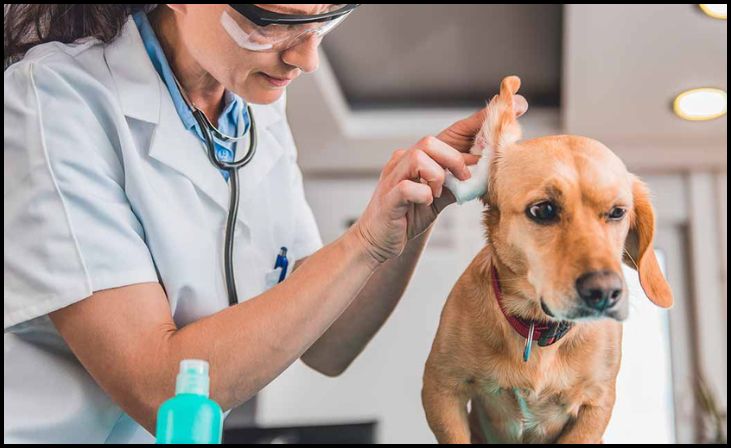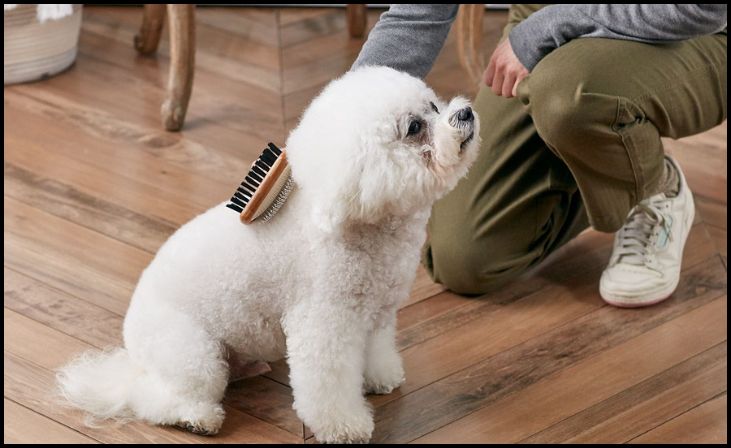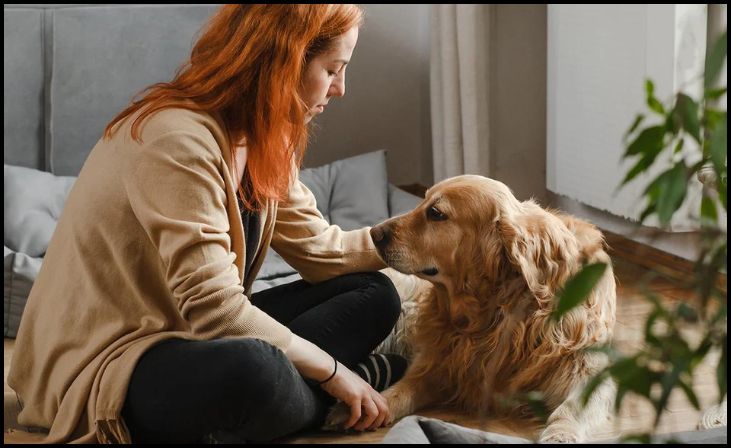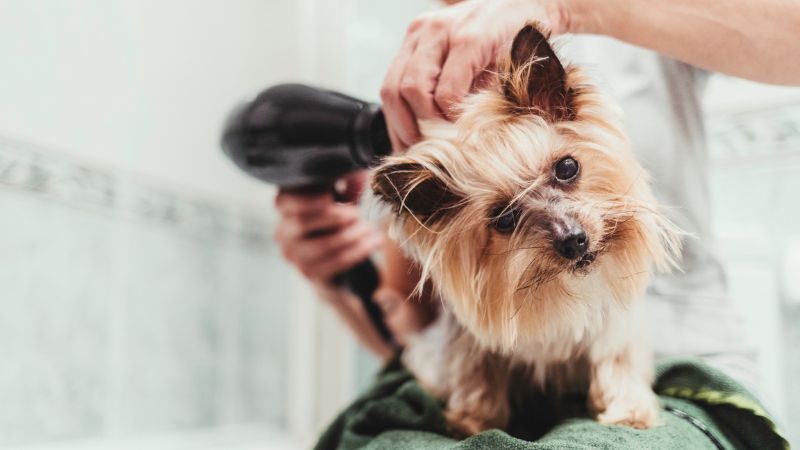Grooming is a crucial aspect of dog care that ensures not only the physical well-being of your furry friend but also strengthens the bond between pet and owner. Regular grooming helps in maintaining a dog’s health, enhancing their appearance, and preventing potential health issues. The process of grooming includes a variety of tasks such as brushing, bathing, nail trimming, ear cleaning, and dental care. Each of these tasks plays a significant role in keeping your dog happy and healthy. Understanding and implementing these grooming practices can make a substantial difference in your dog’s overall quality of life.
10 Essential Grooming Tips for Dogs Care
1. Regular Brushing

Brushing your dog’s coat regularly is one of the most essential grooming practices. It helps to remove loose hair, dirt, and debris, while also preventing matting and tangling. For dogs with long or dense fur, daily brushing might be necessary, whereas short-haired breeds may only need brushing once a week. Regular brushing also stimulates the skin, promoting healthy blood circulation and distributing natural oils throughout the coat, which keeps it shiny and healthy. Investing in the right type of brush for your dog’s coat type is crucial to ensure effective grooming and to avoid causing any discomfort to your pet.
2. Bathing
Bathing your dog is important for maintaining skin and coat health. However, the frequency of baths depends on your dog’s breed, coat type, and lifestyle. Overbathing can strip the coat of its natural oils, leading to dry, flaky skin. Most dogs benefit from a bath every month or two, but dogs that spend a lot of time outdoors or have skin conditions might need more frequent baths. Use a dog-specific shampoo to avoid irritating their skin and always rinse thoroughly to remove all shampoo residues. After bathing, ensure your dog is completely dry to prevent any fungal or bacterial infections.
Read Also: Common Behavioral Issues in Pets and How to Address Them
3. Nail Trimming
Consistently trimming your dog’s claws is crucial for their mobility and comfort. Long nails can cause pain, lead to infections, and even affect the way your dog walks, potentially leading to joint problems. Ideally, you should trim your dog’s nails every 3-4 weeks, or whenever you hear them clicking on hard surfaces. Use a proper dog nail clipper and be cautious not to cut into the quick, which can cause bleeding and pain. If you are uncertain about the process of paring your dog’s nails, it is recommended that you seek the assistance of a professional groomer or veterinarian.
4. Ear Cleaning

Regular ear cleaning is crucial for preventing infections and maintaining your dog’s ear health. Dogs with floppy ears or those prone to ear infections need more frequent cleaning. Check your dog’s ears weekly for any signs of redness, odor, or discharge, which can indicate an infection. Use a veterinarian-recommended ear cleaner and gently wipe the outer part of the ear with a cotton ball. To prevent injury, refrain from inserting anything deeply into the auditory canal. Regular ear cleaning helps in removing excess wax and debris, keeping your dog’s ears healthy and infection-free.
5. Dental Care
Oral hygiene is often overlooked but is a vital part of your dog’s grooming routine. Regular brushing of your dog’s teeth helps prevent plaque and tartar buildup, which can lead to periodontal disease. It is recommended that you use a toothbrush and toothpaste that are specifically designed for canines, as human toothpaste can be detrimental to them. Aim to brush your dog’s teeth several times a week, if not daily. Providing dental chews and toys can also aid in keeping their teeth clean. Regular dental check-ups with your veterinarian are essential to monitor and maintain your dog’s oral health.
6. Eye Care
Keeping your dog’s eyes clean and free of discharge is important for preventing infections and ensuring clear vision. Regularly check your dog’s eyes for redness, cloudiness, or excessive tearing. Gently wipe away any discharge with a damp cloth or cotton ball. Some breeds are more prone to tear staining and may require more frequent cleaning. If you notice any persistent issues or changes in your dog’s eyes, consult your veterinarian for proper diagnosis and treatment. Healthy eyes are a key component of your dog’s overall well-being.
7. Coat Trimming

Regular coat trimming is necessary for certain breeds to keep them looking neat and to prevent matting. Dogs with long or curly coats, such as Poodles and Shih Tzus, benefit from professional grooming every 6-8 weeks. Trimming also helps to keep your dog cool in hot weather and reduces the amount of shedding. If you choose to trim your dog’s coat at home, invest in high-quality grooming tools and learn the proper techniques to avoid injuring your pet. Regular trimming keeps your dog’s coat in optimal condition and enhances their appearance.
8. Anal Gland Expression
Anal gland expression is an often overlooked but important aspect of dog grooming. Dogs have two small glands located near their anus that can become full or infected if not expressed regularly. Signs of full anal glands include scooting, licking the area excessively, or a foul odor. Some dogs may need their glands expressed every few months, while others might require more frequent attention. If you’re uncomfortable performing this task yourself, seek help from a professional groomer or veterinarian. Proper anal gland care prevents discomfort and potential infections.
9. Paw Care
Taking care of your dog’s paws is essential for their overall health and mobility. Regularly check your dog’s paws for cuts, cracks, or foreign objects. Trim the hair around their paw pads to prevent matting and reduce the risk of debris getting stuck. During the winter months, protect your dog’s paws from ice, salt, and cold weather by using dog booties or paw balms. Keeping your dog’s paws clean and healthy helps them walk comfortably and prevents potential infections or injuries.
10. Routine Health Checks

Incorporating routine health checks into your grooming routine is vital for early detection of potential health issues. While grooming, take the time to check your dog for lumps, bumps, or skin abnormalities. Monitor their weight and watch for any changes in their behavior or appetite. Regular health checks allow you to catch any problems early and seek veterinary care promptly. Additionally, maintaining a grooming schedule helps you stay organized and ensures that your dog receives consistent care, contributing to their overall health and happiness.
Read Also: 10 Effective Ways to Train Your Dog at Home
Conclusion
Grooming is more than just an aesthetic practice; it is a comprehensive approach to ensuring your dog’s health and happiness. By incorporating these essential grooming tips into your routine, you can significantly enhance your dog’s quality of life. Regular grooming sessions not only keep your dog looking their best but also help in early detection of potential health issues, ensuring timely medical intervention. Remember, grooming is an opportunity to bond with your pet and show them love and care. With patience and the right techniques, you can make grooming a positive and enjoyable experience for both you and your furry friend.
FAQs
How often should I groom my dog?
The frequency of grooming depends on your dog’s breed, coat type, and lifestyle. Generally, most dogs benefit from regular brushing and monthly baths. Specific tasks like nail trimming and ear cleaning should be done as needed, typically every few weeks.
Can I use human shampoo on my dog?
No, human shampoo is not recommended for dogs as it can irritate their skin and disrupt the natural pH balance. Always use a shampoo specifically formulated for dogs to ensure their skin and coat remain healthy.



